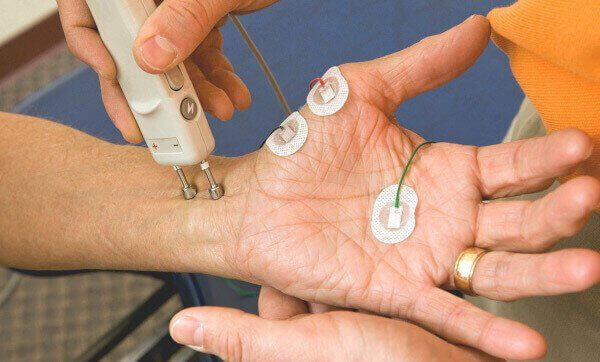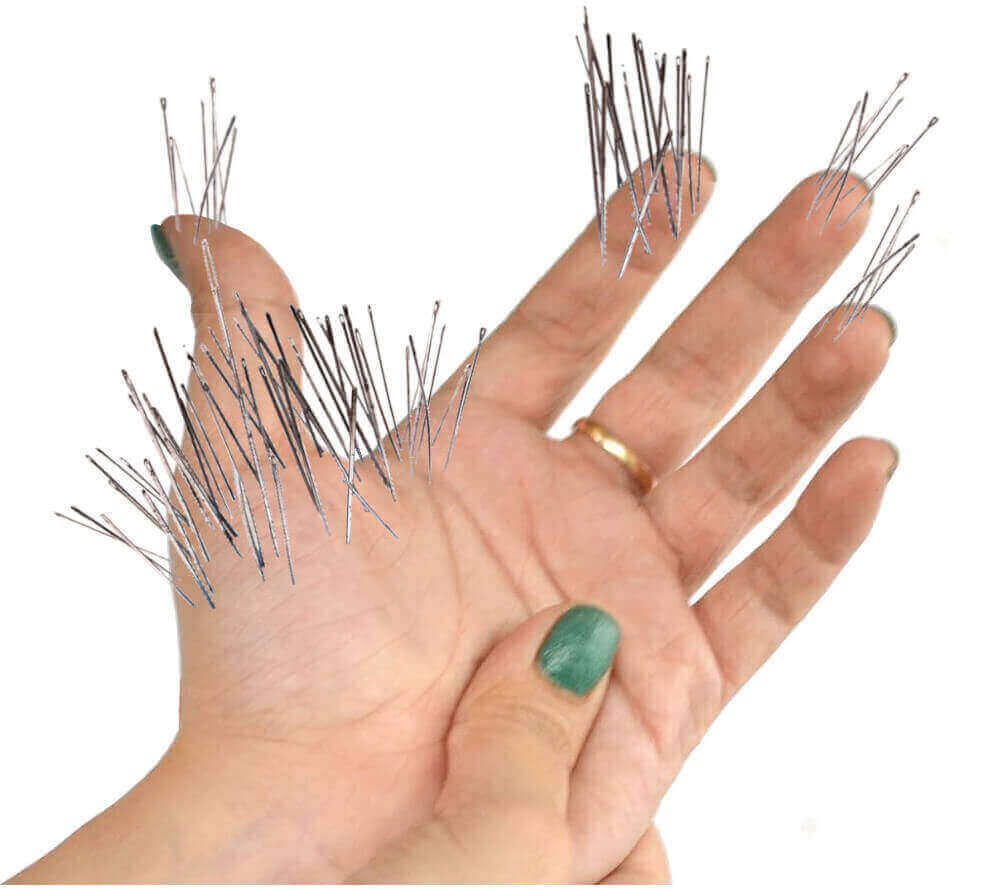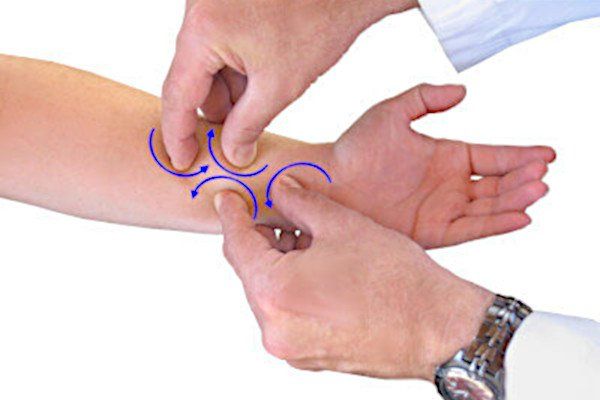Is Carpal Tunnel Numbing or Painful?
From Dr. Z - Carpal tunnel syndrome specialist
Is Carpal Tunnel Numbing or Painful?
Is carpal tunnel a condition that causes numbness or pain? Actually, it can can cause both symptoms. It can also produce other symptoms in the fingers and hand in addition to numbness and pain. These range from itching to painful shooting electric shocks.
This article describes what the disorder is, carpal tunnel syndrome's most common symptoms, and who's likely to get it. More importantly, it's a guide about what you can do to prevent carpal tunnel from getting worse.
What is carpal tunnel syndrome?
Asking "What is carpal tunnel syndrome?" is like asking "What is a headache?" The sensations you get from both conditions are easy to describe. But why the sensations occur is complicated.
Carpal tunnel syndrome is basically a neurological disorder caused by a damaged nerve in your hand. That nerve, the median nerve, carries sensations from your fingers to your brain. Those sensations include pain, vibration, temperature, touch sensitivity, etc.
But when the median nerve is damaged, those sensations get mixed up and amplified. This abnormal mix-up is called
paresthesia.
Therefore, when you have carpal tunnel syndrome, for seemingly no reason, your hand or fingers hurt, go numb, tingle, or produce other abnormal sensations.
How does the median nerve get damaged?
The damage to the median nerve occurs due to swollen flexor tendons. These tendons are located next to the nerve inside the wrist joint. The tendons are responsible for curling your fingers and forming a gripping action.
Nobody is completely sure why the flexor tendons swell in some people but not in others. But at it's source, the swelling is associated with adhesions that form around the tendons. Certain finger or hand activities (like excessive typing - see below) are associated with tendon irritation, swelling, and ultimately getting carpal tunnel syndrome.
When the flexor tendons inflame and swell, they push against the adjacent median nerve. With more and more pushing, the nerve becomes compressed between the expanding tendons and the bony wall of the wrist. Essentially, the nerve gets trapped and crushed. This is why carpal tunnel syndrome is called an entrapment neuropathy.
This nerve crushing is what produces all of the paresthesia symptoms of carpal tunnel syndrome. Doctors can detect this nerve damage by performing electromyographic (EMG) tests or using provocative (tapping and wrist bending) tests.
Common symptoms of carpal tunnel syndrome
Like all nerves, the median nerve dislikes being crushed. The resultant paresthesia symptoms are specific to this disorder. They mainly include feelings of either numbness or pain. But you can also have the following symptoms in addition to, or separate from them:
- Tingling (or pins-and-needles)
- Burning
- Itchiness
- Soreness
- Weakness
- Shooting electric shocks
- Hand or finger clumsiness
Usually the symptoms occur when your hand is at rest. In fact, this is the main difference between carpal tunnel syndrome and wrist (flexor) tendonitis. Tendonitis symptoms generally appear only when your hand is working, and not at rest. Here are other ways to tell the difference between carpal tunnel syndrome and wrist tendonitis.
Trying to sleep is difficult with carpal tunnel syndrome because the pain or numbness often wakes you up. Most people feel the need to shake out their hands to relieve the numbness. Others need to rub their hands to relieve the pain.
Are symptoms unrelenting and starting to last into the daytime? Is carpal tunnel syndrome interfering with every aspect of your life?
If you answer "yes" to both questions, it means carpal tunnel syndrome has progressed to the severe stage. At that point, patients usually feel significant weakness in their hands and fingers. They also feel clumsiness when holding a pen, tying a shoelace, buttoning a shirt, or picking up coins or keys.
Without treatment, the disorder usually progresses even further. More advanced carpal tunnel syndrome can result in loss of sensitivity to hot or cold in the fingers. Pain, numbness or tingling (or all of these) is constant and unrelenting. Oftentimes, the thumb muscle begins to flatten out (called "wasting") as the thumb becomes more and more useless.
When you can no longer use your hand, you've reached "end stage" carpal tunnel syndrome. Fingers become permanently curled in a resultant condition known as
claw hand.
Who gets carpal tunnel syndrome?
High risk occupations
Is carpal tunnel syndrome found only in certain industries? No.... anyone can get it! However, certain occupations are known for their high incidence of this disorder. Note that all of these occupations rely heavily on rapid and repetitive finger movement or else excessive grabbing/pinching and holding:
- Transcriptionists
- Assembly line workers
- eSports & video gamers
- Dental hygienists
- Graphic designers
- Knitters & sewers
- Truck drivers
- Fine artists
- Horse riders or trainers
- Hairdressers/stylists
- Dentists
- Guitar players
- Carpenters
- Farmers
- Machine operators
- Butchers
- Maids/housekeepers
- Electronic assemblers
- Gardeners
- Brick layers
- Electricians
- Janitors
- Vibrating tool users
- Sonographers
- Data-entry clerks
- Radiologists
- Mechanics
High risk conditions
Are there people at higher risk for developing carpal tunnel syndrome? Yes.... and they should take warning! The following conditions are well-known "risk factors" in developing this condition:
- Being female
- Being pregnant
- Rheumatoid arthritis
- Obesity
- Emotional distress
- Diabetes
- Hypothyroidism
- Prior fractured wrist
- Lupus
- Smoking
- Having a small body frame (with narrow wrists)
- Lyme disease
What can be done about carpal tunnel syndrome?
Carpal tunnel syndrome can be treated in all stages except the "end stage". But the probability of complete success becomes less likely the more you let the disorder go without treatment.
All carpal tunnel treatments are divided into 2 categories: surgical or nonsurgical.
The US National Institutes of Health and the American Academy of Orthopedic Surgeons agree that all patients should first try non-surgical treatments for carpal tunnel syndrome before considering surgery. Here's why:
- Non-surgical treatments are successful in most patients. More advanced stages of carpal tunnel syndrome require the simultaneous application of various non-surgical remedies (see below).
- Surgery's success rate lessens with increased severity. Therefore, the more advanced the condition, the less likelihood of surgical success.
- Surveys which combine
both
surgical treatments and
all
conditions indicate that only 50% of surgical patients have satisfactory results by 2 years. The primary reasons for surgery's failure rate are return of symptoms or
persistent pain.
Surgical options
There are 2 surgical treatment options (or surgical methods) used for this disorder. They are called open or endoscopic carpal tunnel release surgery. It's called "release" surgery because the operation releases the median nerve from entrapment.
Each method has its advantages and disadvantages. The most important differences are the possible complications arising from each method. Also, the amount of post-surgical pain you experience, as well as your total recovery time can be vary with the method used.
"What is carpal tunnel surgery's success rate? The answer isn't a simple one because it depends on several factors. Under perfect conditions, the success rate can be as high as 85%.
But that number drops to under 40% success if one or more other conditions exist. Chief among them are if you:
- Are over 55
- Have severe symptoms
- Have had symptoms for over 1 year
- Have chronic conditions like obesity, diabetes or arthritis
Non-surgical options
Non-surgical treatments options are effective in most carpal tunnel patients regardless of the condition's stage. However, the more severe the condition, the more necessary it is to employ multiple and simultaneous treatment options to see good results. In other words, you may require all 5 of the non-surgical treatment options below at the same time.
The most widely-used non-surgical treatment options are:
1. Resting your hand: Taking a short periodic break from work is very helpful. If you can, try to avoid the activity that's adding stress to your hand. Note that resting your hand alone is not effective for severity beyond the initial (mild) stage of carpal tunnel syndrome.
2. Night bracing your hand: This technique is highly effective for any stage of carpal tunnel syndrome. But be sure to only use a certified carpal tunnel brace. Ordinary "pharmacy braces" are not suited treat this condition, and may actually be more harmful. This is especially true if the brace has a "palmar spine".
3. Regular stretching exercises: These are also highly effective for any stage of carpal tunnel syndrome. The best stretching exercises are designed to lubricate tendons and break up
tissue adhesions inside the wrist joint. These adhesions contribute to flexor tendon inflammation and swelling.
4. Steroid shots: Corticosteroid injections are only effective in the mild and moderate stages of carpal tunnel syndrome. Only rarely are they effective in the severe stage. In any case, the steroid's effects last for 2-6 months. Then symptoms will return if no additional treatment is used.
5.
Myofascial release massage: This non-surgical option is perhaps the most effective of these treatments. The therapy breaks up adhesions, drains excess fluid, and restores blood flow to the wrist. The therapy must be performed daily for at least 4 weeks to be effective. However, you cannot perform this therapy on yourself. But you can train a partner to do it for you, or else see a therapist every day for the treatment.
Conclusion
What is carpal tunnel and what symptoms does it cause? This disorder of the hand affects millions of people. Most of them are in occupations where finger and hand movement is constant and stressful. The result is pain, numbness, tingling and other sensations in the fingers and hand. These symptoms can make life miserable. But there are both surgical and non-surgical treatment options to relieve the symptoms permanently.











